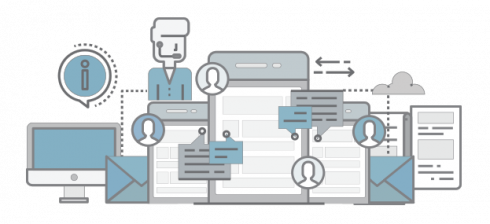
Jeff Scheaffer, general manager of continuous delivery at CA Technologies
As more organizations adopt DevOps and agile development methods, they gravitate towards test automation – enabling test teams to automatically generate reusable test assets like test cases, test data, and test automation scripts right from requirements. CA Technologies offers comprehensive continuous testing solutions that automate the most difficult testing activities – from requirements engineering through test design automation and optimization. These capabilities help organizations test at the speed of agile and build better apps, faster – with reduced costs and risk.
While many testing vendors may offer point testing tools for regression, performance, API, or integration testing, and even automate and drive efficiency in these testing areas, no other vendor can offer true end-to-end, continuous testing from planning to production.
Our approach to using continuous testing is to create an open, flexible, integrated ecosystem from planning to production. CA provides the tools to plan, build, test, release, operate, automate and secure all software delivery whether an app is cloud-native, classically architected or hosted on a legacy platform.
Traditional testing inhibits development speed and impacts quality. Developer and testing teams don’t have weeks to test, but hours. By adopting next-generation testing practices, you’ll have the ability to test early, often, automatically and continuously. If your goal is delivering better apps, faster—while reducing costs—CA’s continuous testing solutions can help you get there.
A guide to automated testing tools
Wayne Ariola, chief marketing officer for Tricentis
Continuous Testing is all about change. A Continuous Testing platform must be able to assess the risk of a release candidate—in real time, and in context of the iterative changes impacting the application under test. The Tricentis Continuous Testing platform focuses on delivering that insight. There are three primary differentiators to our approach.
First, the Tricentis Continuous Testing platform was architected to accelerate testing to keep pace with rapid delivery processes. At the core of the Tricentis Continuous Testing platform is “Model-Based Test Automation” technology, which detects changes to the application under test and helps you rapidly evolve the regression test suite to accommodate new user stories. The Tricentis Model-Based Test Automation technology eliminates the overhead required to maintain scripted tests.
Second, the Tricentis solution focuses on risk-based testing. We start by identifying your top business risks (considering both frequency and damage), then optimize the test suite to cover the greatest risks. This results in a highly-efficient test suite that is fast to execute and easy to maintain. On average, this approach yields significantly greater risk coverage with about 66% fewer tests.
Finally, we provide a unified solution for automating end-to-end testing across the many technologies involved in today’s business transactions. An intuitive, business-readable interface makes it simple to automate tests across 100+ technologies—everything from web apps, to packaged applications such as SAP, SFDC, Oracle, and Workday), to legacy applications and APIs. This is all accomplished with scriptless test automation, which enables extreme automation without the overhead associated with managing scripts.
Gil Sever, co-founder and CEO of Applitools
To help guide Test Automation Engineers, DevOps Teams, Front End Developers, Manual QA experts, and Digital Transformation executives, Applitools created Application Visual Management (AVM) – a new category framework that automates all visual aspects of application UI creation, testing, delivery and monitoring at the speed of CI-CD. The goal is to help shorten application delivery cycles and improve software quality because what the customer sees is what matters most. By helping prevent visual flaws from occurring in the application delivery process, teams can eliminate the UI bugs that frequently result from events, such as browser and operating system updates, new devices penetrating the marketplace, the effects of dynamic content on the web, and the increasing frequency of updates resulting from CI-CD initiatives.
Today’s DevOps toolchain only supports the functional aspects of modern application delivery in areas like testing, monitoring, Continuous Integration (CI), Continuous Delivery (CD), accessibility, security, bug tracking, collaboration, source control, and more. Applitools AI Powered Automated Visual Testing and Monitoring platform handles all aspects of visual UI validation to complete the DevOps toolchain, allowing acceleration and full automation of the entire delivery process. Fortune 100 companies have already realized significant benefits through the use of Visual AI technology and those benefits can now be offered to any Enterprise or SMB.
Mark Lambert, vice president of products at Parasoft
Parasoft’s automated software testing tool suite helps organizations build a scalable test automation strategy that addresses each layer of the testing pyramid.
At the bottom of the pyramid, you can use Parasoft Jtest, for Java, or Parasoft C/C++test, for C and C++, to cut the time in half that it takes to create a solid foundation of Java (JUnit) or C/C++ unit tests. By using Parasoft Jtest, you get tests that are easy to create while being easier to automate and easier to debug than complex end-to-end UI tests.
Sitting on top of the unit tests are a broad set of service-layer API tests built with Parasoft SOAtest. These tests provide the perfect communication layer between developers and testers, with visual tools that are easy to adopt and scale. Parasoft SOAtest’s smart test generation technology uses AI to automate the creation of these tests, making it easier for API testing beginners to get started.
Once the portfolio of tests is established, the next goal is running these automated tests continuously, as the team is actively developing new capabilities and enhancements. This is where service virtualization, powered by Parasoft Virtualize, can enable early-stage defect detection by decoupling the tests from constrained system dependencies and shifting-left the execution of automated regression tests.
Parasoft DTP brings the results of all of your testing together, integrated into your tools to provide robust reporting and analytics dashboards that provide visibility into the entire testing practice a whole. Parasoft DTP’s smart analytic engine gives teams actionable insights that drive dev/test productivity and focus.
Leveraging Parasoft’s technologies, organizations can unlock the potential of Agile by building meaningful and maintainable test suites that seamlessly integrate into the CI pipeline.
RELATED CONTENT: Testing strives to keep pace with development






